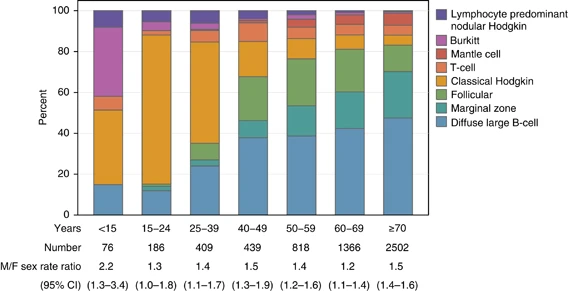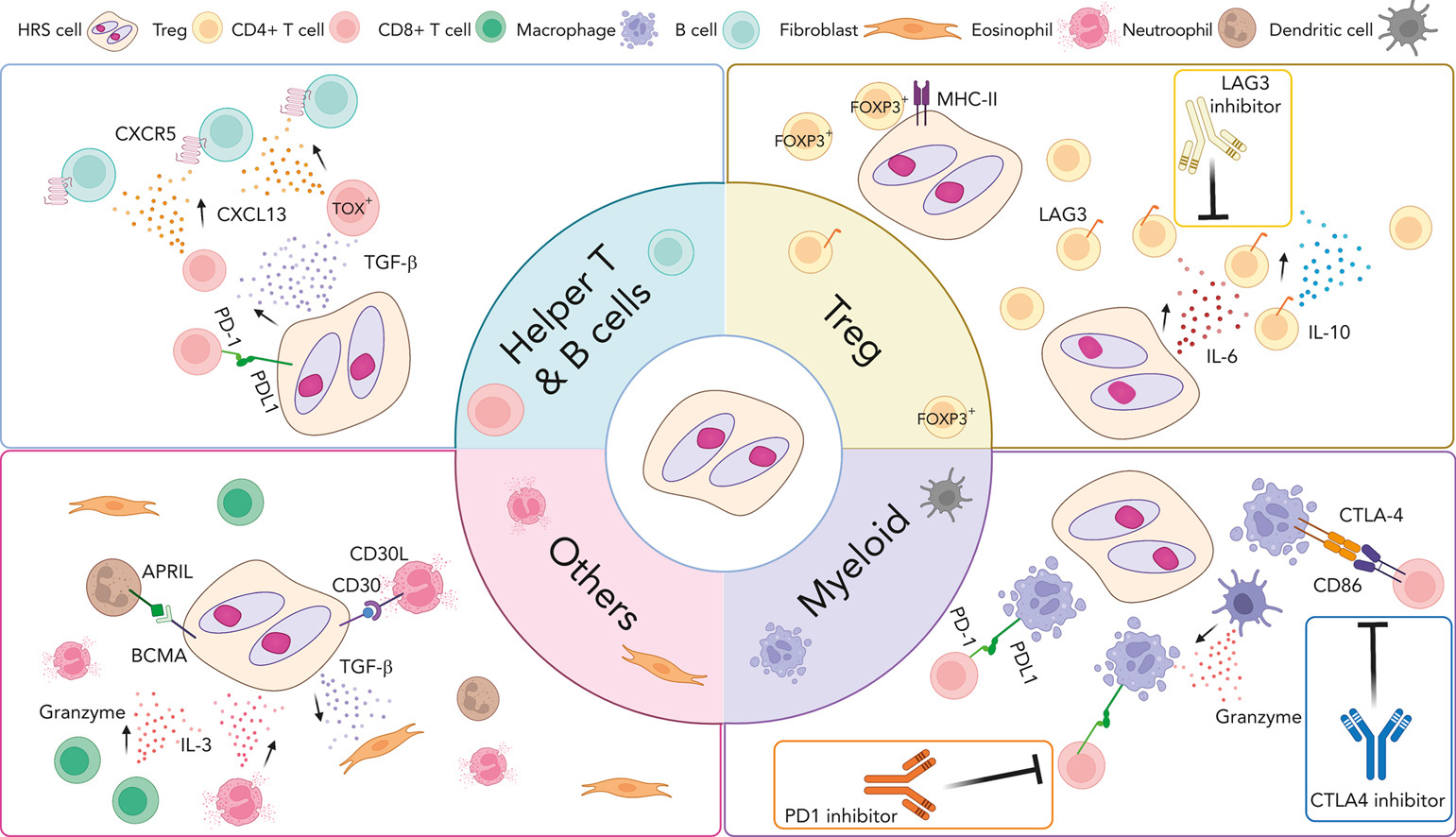- Lisa Roth. Genomic Landscape in Hodgkin Lymphoma. JOINT SESSION: Molecular Characterization of Lymphomas in Children, Adolescents, and Young Adults. ASH 2024. Saturday, December 7, 2024, 4:00 PM-5:35 PM
- Tomohiro Aoki. Sequencing Technologies in Hodgkin Lymphoma. JOINT SESSION: Molecular Characterization of Lymphomas in Children, Adolescents, and Young Adults. ASH 2024. Saturday, December 7, 2024, 4:00 PM-5:35 PM
- Birgit Burkhardt. Age-Related Molecular Changes in Burkitt Lymphoma. JOINT SESSION: Molecular Characterization of Lymphomas in Children, Adolescents, and Young Adults. ASH 2024. Saturday, December 7, 2024, 4:00 PM-5:35 PM
- Björn Chapuy. Functional Genomics of Non-Hodgkin Lymphoma in Children, Adolescents, and Young Adults. JOINT SESSION: Molecular Characterization of Lymphomas in Children, Adolescents, and Young Adults. ASH 2024. Saturday, December 7, 2024, 4:00 PM-5:35 PM
Molecular characterization of Lymphomas in pediatric patients
Lymphomas in children, adolescents, and young adults represent a unique clinical challenge due to their distinct biological and molecular characteristics.
Advances in Hodgkin Lymphoma research
Lymphomas across the age spectrum (Smith et al. BJC. 2015)
Dr. Lisa Roth highlighted significant advancements in understanding the genomic landscape of classical Hodgkin Lymphoma (cHL). Historically, genetic profiling of Hodgkin and Reed-Sternberg (HRS) cells was limited by their rarity in tumors. Innovations like fluorescence-activated cell sorting and circulating tumor DNA analysis have uncovered tumors with high mutational burdens, complex structural variants, and distinct genomic subtypes.
Key findings include:
- Age-related genomic differences: pediatric and young adult cHL cases (<40 years) exhibit a higher mutational burden and accelerated mutational rates compared to older adults
- Immune evasion mechanisms: alterations such as beta-2 microglobulin mutations, loss of MHC class I expression, and amplification of PD-L1/PD-L2 pathways are prevalent.
- Early molecular events: whole-genome sequencing revealed that many driver mutations occur prior to large chromosomal gains, suggesting early genetic disruptions in germinal center B cells.
These insights pave the way for novel prognostic biomarkers and therapeutic approaches, including targeting immune escape pathways.
Exploring the tumor microenvironment
Dr. Tomohiro Aoki’s presentation focused on the tumor microenvironment (TME) of cHL, characterized by an abundance of immune cells (up to 99% of tumor content). Advances in single-cell and spatial transcriptomics have clarified age-related differences in TME composition:
- Pediatric vs. adult TME: pediatric cHL shows higher M1 macrophage and CD8 T-cell populations, while adults display more immunosuppressive macrophages
- Immune cell heterogeneity: single-cell RNA sequencing revealed diverse T-cell subsets, including regulatory T cells (Tregs) with distinct immunosuppressive phenotypes.
- Biomarkers for PD-1 blockade: spatial analyses identified immune cell interactions that may predict responses to immune checkpoint inhibitors.
The integration of spatial technologies and single-cell analyses enables deeper understanding of how TME influences disease progression and therapy outcomes.
Hodgkin lymphoma biology by single-cell analysis (Aoki T, Steidl C. Blood. 2023)
Burkitt Lymphoma: age-related molecular changes
Dr. Birgit Burkhardt explored the molecular characteristics of Burkitt lymphoma (BL) across age groups. Key distinctions between pediatric and adult cases include:
- Pathway alterations: pediatric BL exhibits higher frequencies of mutations in ID3, TCF3, and the CCND3 pathways compared to adults
- Prognostic markers: differences in TP53 mutations and Epstein-Barr virus (EBV) association suggest age-specific implications for pathogenesis and outcomes
- Age-independent features: shared alterations, such as MYC translocations, underpin disease mechanisms across all ages.
These findings underscore the importance of tailoring therapeutic strategies to age-specific molecular profiles.
Insights into Primary Mediastinal B-Cell Lymphoma
Dr. Björn Chapuy delved into primary mediastinal B-cell lymphoma (PMBCL), a malignancy predominantly affecting young female patients. This lymphoma shares molecular features with cHL, such as 9p24.1 amplifications driving PD-L1/PD-L2 expression.
Notable findings include:
- Immune escape mechanisms: alterations in MHC class I and II pathways, combined with high tumor mutational burdens, contribute to immune evasion
- Therapeutic implications: PD-1 inhibitors demonstrate significant efficacy in relapsed/refractory PMBCL cases, highlighting the translational impact of genomic studies.
Future research aims to refine biomarker-driven therapies and explore combination strategies to enhance treatment responses.
Conclusions and future trends
This session emphasized the transformative potential of next-generation technologies in unraveling the complexity of lymphomas in younger populations. Key takeaways include:
- Molecular profiling informs the classification, prognosis, and therapeutic targeting of diverse lymphoma subtypes
- Age-related biological differences necessitate tailored approaches to diagnosis and treatment
- Emerging biomarkers and immune-based therapies offer promising avenues for improving outcomes.
Continued collaboration between pediatric and adult oncology teams, combined with technological advancements, will further advance our understanding and management of these challenging diseases.

